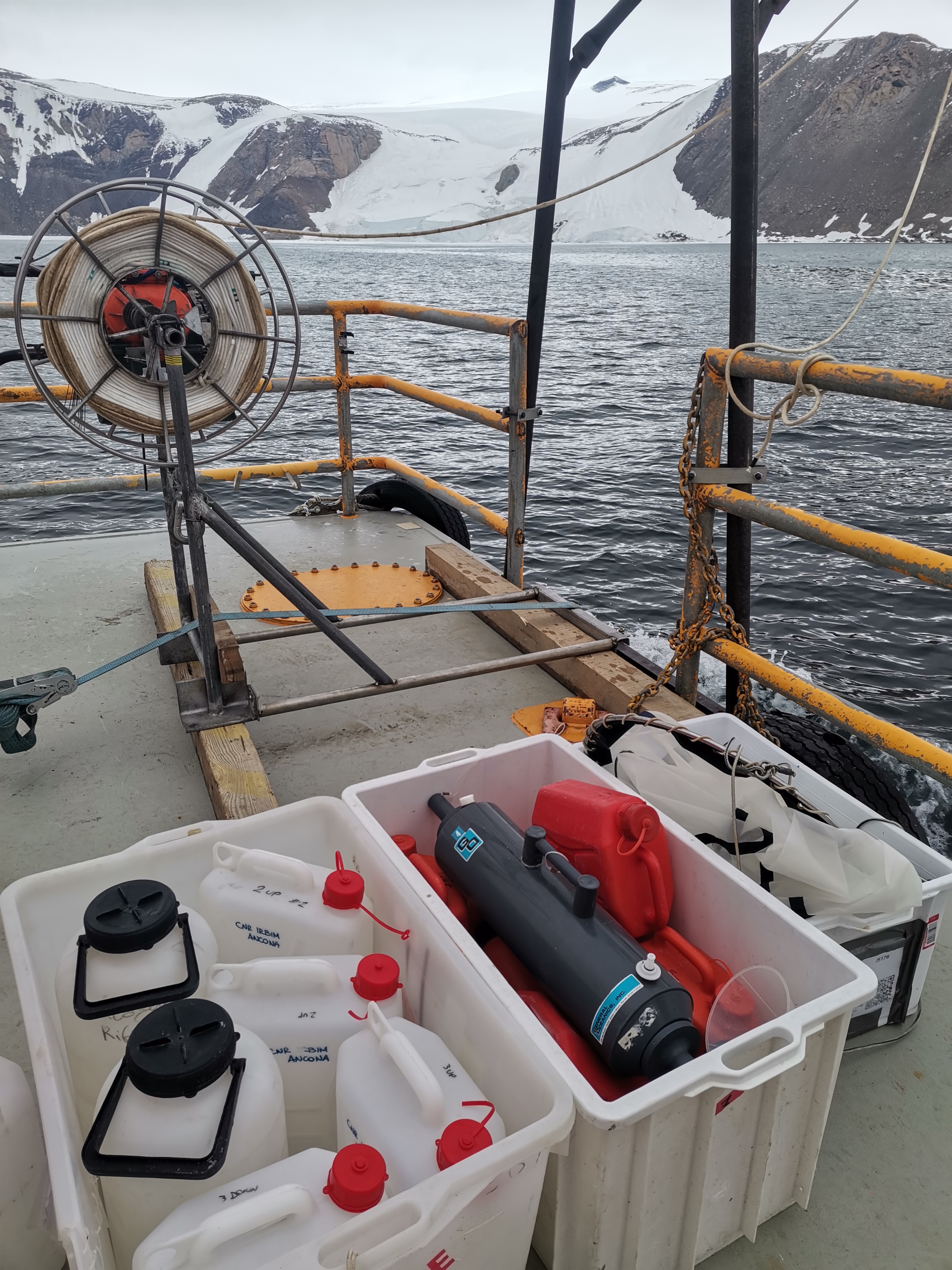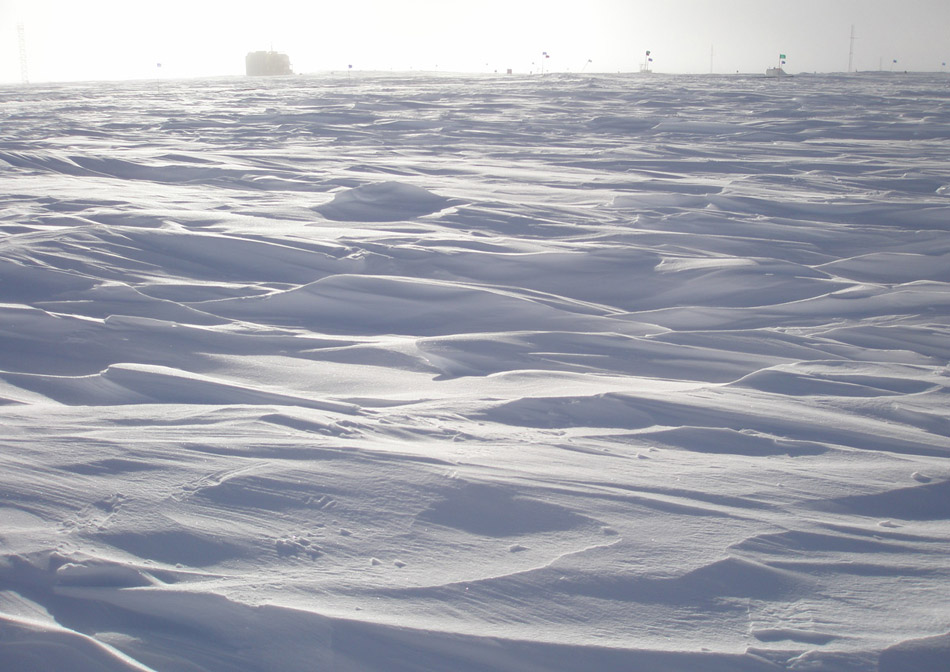2022
Type of resources
Topics
INSPIRE themes
Keywords
Contact for the resource
Provided by
Years
Formats
Representation types
Update frequencies
status
Scale
-
Terra Nova Bay (Ross Sea, Antarctica), characterized by a moltitude of ice tongues flowing from land to sea, represents an ideal study site for understanding the complex interaction between relative sea level variations and ice sheet dynamics during the Holocene. The DISGELI project, thanks to the combination of innovative technology and traditional methods for geomorphologic and stratigraphic analysis, aims to: i) reconstruct the local variations of the East Antarctic Ice Sheet after the Last Glacial Maximum; ii) provide a time constrain for the deglaciation processes along the coast; iii) reconstruct, with unprecedent detail, the relative sea level variations during Holocene in the Drygalski basin. The morpho-bathymetric and topographic data obtained through this study will be integrated using digital terrain models based on the analyses of key areas onland, where palaeo-coastlines and sea-level markers have been identified.
-

The RESTORE project is dedicated to the development of portable robotic technologies with the capability to perform multi-disciplinary multi-parametric 3-D monitoring of marine environment. Its primary focus lies in examining critical areas such as the air-sea-ice and water-sediment interfaces in Antarctica. This endeavour aims to support various research aspects, including the study of microbial ecology and DNA tracing, as well as the investigation of Antarctic geology, particularly the dynamics surrounding glaciers and ice-covered coastal regions. Furthermore, RESTORE is committed to scrutinising the impacts of climate change on the Antarctic atmosphere and the exchanges that occur between the sea and air. The comprehensive dataset collected during RESTORE will provide researchers with a holistic perspective on an extreme and remote environment such as Antarctica, facilitating the interpretation of atmospheric and oceanic dynamics at the interface zones and, the 3D mapping of the underwater environment and the physical characterisation of the sampled region.
-

The effects of sea ice melting, and the consequent changes in the trophic conditions in Antarctic ecosystems, have been focused on phytoplankton with cross-food web links from krill to penguins, while the consequences on the planktonic microbial food web (viruses, prokaryotes and unicellular eukaryotes), driving biogeochemical cycles, have been largely ignored. This research investigates how changes related to sea ice melting influence the diversity and functioning of planktonic microbes in the Ross Sea coastal ecosystem of Terranova Bay. The objectives are: i) to investigate the temporal changes of planktonic microbial biodiversity, ii) to investigate the biodiversity/ecosystem functioning relationships iii) to assess the role of viruses on biodiversity and biogeochemical cycles, iv) to identify the drivers that shape microbial biodiversity and functions, and v) to shed light on the interactions within the planktonic food web, and their response to the ice melting. META-ICE-ROSS integrates ad hoc sampling with sophisticated methodologies of high-throughput sequencing of microbial DNA (metagenomics), never documented in previous Italian expeditions at Terranova Bay. The sampling includes the collection of seawater beneath the pack ice at increasing distance from the MZ Station and characterised by different thermohaline conditions, on a weekly basis from early November to mid January. The groundbreaking nature of META-ICE-ROSS will allow to provide unprecedented evidences on the role of microbial interactions in the functioning of the Ross Sea coastal ecosystem, to improve knowledge on biological changes due to global climate changes and, nonetheless, to provide a baseline assessment of the functioning of the microbial food webs and carbon sequestration in the pelagic environment in the Ross Sea region, within the context of the Ross Sea Region Marine Protected Area (RSRMPA) and its monitoring and research plan.
-
The current vision of global climatic changes stresses on the interlinked action of many factors, often more evident at regional scales. Polar regions are among the areas most sensitive to perturbations of the climate: through connections involving ocean, atmosphere, biosphere, lithosphere and cryosphere, they respond to, amplify, and drive changes elsewhere in the Earth system, so that understanding their role is essential. Peculiar characteristics of Polar Regions contribute to modify the energy and radiation budget, and the characteristics of the polar atmospheric boundary layer (ABL), increasing relevance at regional level of coupling processes between components of the climate system, especially in the coastal region. In particular, the long polar night, the sea-ice and snow coverage, favouring the persistency of stable atmospheric conditions, and the local and mesoscale circulation interactions, all affect the status and variability at different time scales of components of the regional climate system. Predicting future conditions of the polar regions is the goal of the Polar Prediction Project and of one of its key elements, the Year of Polar Prediction (YOPP, http://www.polarprediction.net/yopp.html), scheduled to take place from mid-2017 to mid-2019). This requires the scientific knowledge of their present status as well as a process-based understanding of the mechanisms of change. The parameterization of physical processes in regional and global hydrodynamical numerical models of the atmosphere is not yet enough accurate for a correct representation of all components of the climatic system and of their connections, the knowledge of which is needed to determine the role of polar regions in the global climate. As an example, more extended and integrated dataset are required to improve the parameterization of the ABL, for complex orography areas such as the polar coastal regions. The general scope of this project is to improve the understanding of the surface-atmosphere mass and energy exchanges at an Antarctic coastal site in the Ross Sea through continuous and accurate measurements of the atmospheric parameters, and development and verification of multiscale modelling, and through these activities, to address some of the relevant questions included in the roadmap for Antarctic and Southern Ocean science for the next two decades and beyond. Measurements will be carried out year-round at the new Korean Jang Bogo Antarctic Research Station (JBS), located at the coast of Terra Nova Bay, in the vicinity of the Italian Mario Zucchelli Station. Measurement and analysis of radiation components, atmospheric constituents and energy fluxes, meteorological and micrometeorological parameters, will be implemented jointly by Korea Polar Research Institute (KOPRI), CNR and UNIFI, in a way similar to the collaboration already active in the Arctic. Such implementation will be very useful to close a gap in the global climate observation system (GCOS) and contribute to WMO programs providing scientific data and information on meteorological and radiation regimes, vertical structure and chemical composition of the atmosphere.
-

The datataset includes sound pressure levels acquired in the Ross Sea during project AMORS
-
Terra Nova Bay (Ross Sea, Antarctica), characterized by a moltitude of ice tongues flowing from land to sea, represents an ideal study site for understanding the complex interaction between relative sea level variations and ice sheet dynamics during the Holocene. The DISGELI project, thanks to the combination of innovative technology and traditional methods for geomorphologic and stratigraphic analysis, aims to: i) reconstruct the local variations of the East Antarctic Ice Sheet after the Last Glacial Maximum; ii) provide a time constrain for the deglaciation processes along the coast; iii) reconstruct, with unprecedent detail, the relative sea level variations during Holocene in the Drygalski basin. The morpho-bathymetric and topographic data obtained through this study will be integrated using digital terrain models based on the analyses of key areas onland, where palaeo-coastlines and sea-level markers have been identified.
-

Emerging COntaminants in Antarctic Snow: sources and TRAnsport (ECO AS:TRA) Prog. PNRA18_00229 Snow samples